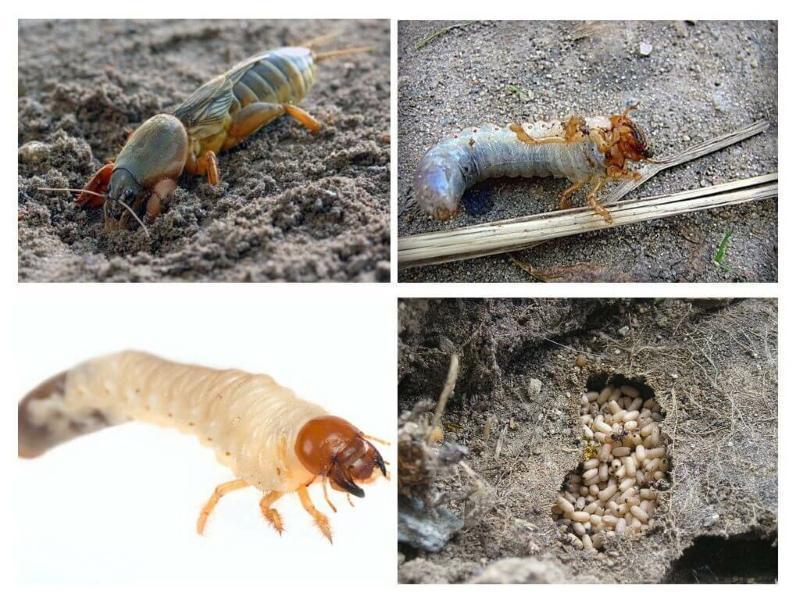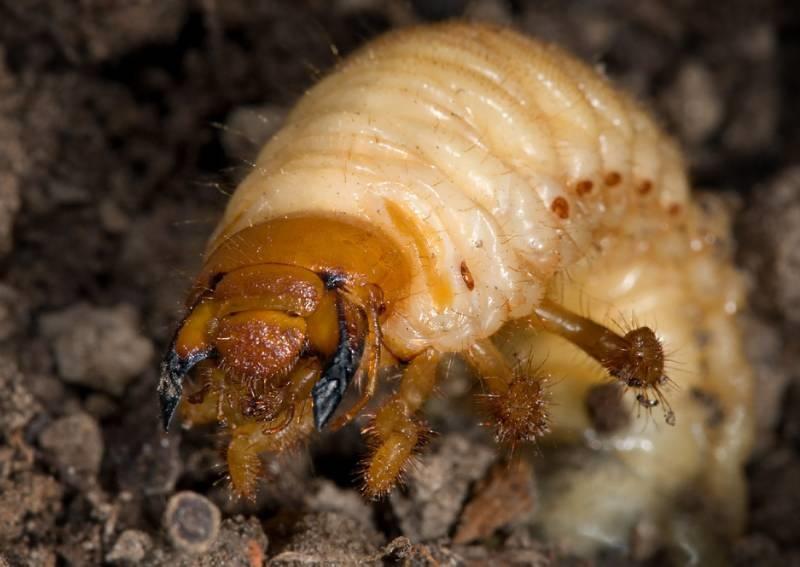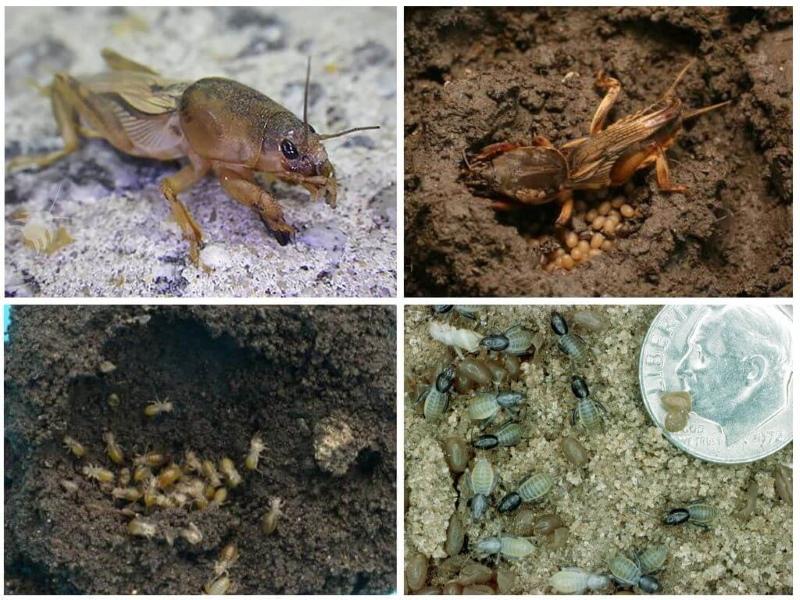Medvedka - photo and description of the larva, pest control measures
 She can be called the "backstage queen" of pests, since she actively consumes all vegetation at night. Medvedka, a photo and description of a larva and an adult insect should be known to every gardener. This omnivorous creature does not disdain vegetables, weeds, or flowers. It cuts off all crops growing on the site. If you have at least one bear, it is important not to let her breed. The young age of the larvae does not prevent them from eating everything along with the adults. After such an attack, nothing will remain in your garden.
She can be called the "backstage queen" of pests, since she actively consumes all vegetation at night. Medvedka, a photo and description of a larva and an adult insect should be known to every gardener. This omnivorous creature does not disdain vegetables, weeds, or flowers. It cuts off all crops growing on the site. If you have at least one bear, it is important not to let her breed. The young age of the larvae does not prevent them from eating everything along with the adults. After such an attack, nothing will remain in your garden.
Medvedka - photo and description of the larva

The bear breeds, laying eggs in clutches previously hidden in small caves. They are not deep, only 15 cm, and in one nest there can be up to 500 eggs. After 2 weeks, larvae hatch from them.
The bear larva looks a bit like a fat shrimp. They are lighter in color, small (up to 3 cm) and so far without wings. But they also have digging legs and do no less harm than adult specimens. The larvae dig tunnels with them in search of food, eating roots and fruits.
The larvae turn into an adult bear in 2 years, having survived 4 molts.
How to deal with bear larvae
 Do not wait for the cubs to grow up and produce offspring themselves. You need to destroy the bear as soon as you find it, or the nest, or the larva.
Do not wait for the cubs to grow up and produce offspring themselves. You need to destroy the bear as soon as you find it, or the nest, or the larva.
There are many ways to get rid of both adult bears and their offspring:
- Find and destroy the masonry.
- Set up manure traps. The insect will climb into them for warm wintering. Then it can be taken out and destroyed.
- Lay out cardboard or boards in early spring. The pest will crawl under them in search of heat.
- Submit lime - The bear loves acidic soil, and will leave immediately if the acidity is lowered.
- Cover the mink with soapy water.
In spring and autumn, the garden must be plowed, and during the summer, the soil must be deeply loosened. This will help destroy the tunnels and nests of the bear.
If there are a lot of pests, you can use biological products: Boverin or Nemabakt. Or chemistry - Thunder, Medvedoks.